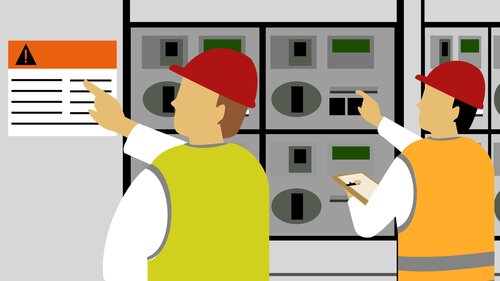It is worth hiring an experienced professional to examine your electric safety devices.
A certificate of electrical safety is a document that is used to find and fix problems in your home before they cause damage or injury. There is no legal requirement for the installation of electrical equipment to be independently checked unless it is being replaced, significantly modified or moved or a permit to use has been denied.
Other than that, building regulations only require the inspection of equipment by trained personnel. They don’t have to be electricians, but they should be aware of what they are doing.
An ordinary electrical safety inspection involves testing the installation to verify that it conforms to the building regulations applicable to it, IEE Wiring Regulations, and the manufacturer’s specifications. Problems can include excess electrical cables, overloaded sockets or faulty equipment which might create a fire.

The certificate will also cover devices that are linked to the installation, for example, kettles, heaters or immersion heaters. Therefore, they are safe to use.
A skilled professional can conduct an electrical inspection. He will provide suggestions on how to address any issues before they cause injury or damage.
If you are renting your property you could be entitled to ask for an electrical safety check under the terms of your lease agreement.
Safety tips for electrical safety during home renovations
Experts at the university recommend homeowners take these precautions when renovating.
1. If somebody is using electricity from other areas of the home Don’t pull the main switch or the isolated circuit breakers. This includes using appliances plugged into outlets that are controlled by a wall-mounted switch.
2. Before wiring the circuit, wait for the power indicator light to dim after turning off the circuit breaker.
3. If you need to turn off an isolated circuit breaker when an electrical device is connected to it, turn off electricity at the main switch before making use of wires controlled by the circuit breakers.
4. Be cautious when making use of an extension cord to supply power. Utilize the shortest length of cord you can and make sure it isn’t overloading. If you’re using a longer cord, ensure that it’s approved by UL for appliances that use high-watts.
5. Be careful when working with old wiring devices, particularly three-way switches. They’ve not been utilized in homes for long and may present a shock or electrocution risk if they are they are not set up correctly.
6. Use only electrical appliances which have been tested according to Australian standards, such as the ones manufactured by Wylex, Schneider Electric, or HPM.
7. Make sure that candles are kept away from any flammable materials. Don’t let candles go alone.
8. Wear shoes with rubber soles, remain on a level surface, and avoid using frayed extension cords. If your appliances are equipped with similar voltage ratings, don’t cut the cord off and connect it to a more modern one.
If you want to learn more, click smoke alarm test certificate
